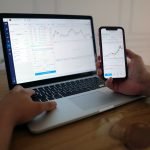Introduction.
If you’ve been trading forex for a while or just getting started, you’ve probably heard about sniper entries. It’s one of those things that sounds pretty cool but can also seem a bit mysterious.
The idea of getting into a trade at the exact right moment, and catching the perfect entry point, sounds like something that could make a big difference in your trading results.
And it’s true—it can. Getting sniper entries isn’t about luck; it’s about precision, timing, and knowing exactly when to pull the trigger.
In this article, I’m going to break down what sniper entries are, why they matter, and, most importantly, how to spot them.
I’ll also walk you through some tips and tricks, and clear up any confusion you might have along the way.
What Are Sniper Entries in Forex?
A sniper entry is when you enter a trade at the perfect point—ideally just before the market makes a strong move in your favor.
Think of it like hitting a target dead center. It’s not about taking any trade that comes your way; it’s about waiting for the right setup and jumping in when everything lines up.
The goal is to get in as close to the best price as possible, so you have a higher chance of success. It’s called “sniper” because, much like a sniper, you’re waiting for the right moment to take your shot.
This means you’re not rushing in and out of trades but waiting patiently for that perfect entry point.
So, why does this matter? Well, when you enter at the right moment, you increase the likelihood of your trade being profitable and reduce the amount of risk you’re taking on.
You’re giving yourself a better chance to make a move with the trend or a breakout before anyone else spots it.
Why Sniper Entries Are Important
- Precision: In the forex market, prices move quickly, and entering at the wrong time can mean the difference between making a profit and taking a loss. A sniper entry is all about precision—getting in right before the market shifts in your favor.
- Reduced Risk: With sniper entries, you’re usually entering a trade with a much better risk-to-reward ratio. By waiting for a setup that makes sense, you can use tight stop losses and aim for bigger rewards, lowering your overall risk.
- Improved Win Rate: Consistently getting sniper entries can significantly improve your win rate. While it might take patience, catching those perfect moments increases the chance of trades that go your way.
- Better Timing for Trends: The forex market moves in trends. By getting in on a sniper entry, you’re able to position yourself early in a trend or breakout, potentially riding that trend all the way to your target.
How Do I Get Sniper Entries in Forex?
Now, let’s dive into how you can start getting sniper entries in your trading. It’s not as hard as it sounds, but it does require practice, patience, and a clear strategy.
Here are some steps and techniques to help you get better at spotting those perfect entry points.
1. Understand the Market Structure
Before you even think about pulling the trigger, it’s important to understand how the forex market works.
The market moves in cycles—up, down, and sideways. These movements create patterns that repeat over time. By understanding market structure, you can spot potential areas where the price might reverse or break out.
Look for things like support and resistance levels, trendlines, and chart patterns. When the price approaches these key levels, that’s often where sniper entries come into play. Knowing the market structure helps you figure out where you should be focusing your attention.
2. Use Technical Indicators for Confirmation.
Indicators can help give you the confidence to pull the trigger when you spot an opportunity. While there are tons of indicators out there, here are a few that are particularly helpful for sniper entries:
- Moving Averages: A simple moving average can help you identify the direction of the trend. If the price is above the moving average, it suggests an uptrend; if it’s below, it suggests a downtrend. This can help you make sure you’re aligning with the trend when entering a trade.
- Relative Strength Index (RSI): The RSI measures whether a currency pair is overbought or oversold. When the RSI is below 30, it suggests the pair is oversold and may reverse upwards. When it’s above 70, it suggests the pair is overbought and could reverse downwards.
- MACD: The Moving Average Convergence Divergence (MACD) is another indicator that can help you spot trends and potential reversals. Look for when the MACD crosses above or below its signal line for entry signals.
3. Wait for Price Action Confirmation.
Price action is the study of how the price moves on the chart, and it’s a key part of getting sniper entries. Instead of relying solely on indicators, price action gives you a clearer view of what the market is doing in real-time.
Look for candlestick patterns like pin bars, engulfing candles, and doji patterns near key levels. These candlestick patterns can often signal that the market is about to make a strong move in one direction.
For example, a bullish engulfing candle after a period of downtrend could signal that the price is about to reverse and head upward. These setups can be great spots to enter a trade with high probability.
4. Practice Patience and Wait for the Right Setup.
One of the most important parts of getting sniper entries is patience. You don’t want to rush into trades just because you’re feeling impatient or think the market might be moving fast. A sniper entry requires you to wait for the perfect setup and not settle for anything less.
Sometimes this means missing out on a trade because it didn’t fit your criteria. But that’s okay—there will always be more opportunities. By waiting for a clear setup, you increase your chances of entering at the right price and timing.
5. Risk Management is Key
Even with the perfect sniper entry, there’s always risk involved in trading. This is why risk management is so important.
To make sure you’re not putting yourself in danger with every trade, use a stop loss and stick to a risk-to-reward ratio that works for you.
A good rule of thumb is to aim for a 2:1 or 3:1 risk-to-reward ratio. This means that for every dollar you risk, you’re aiming to make two or three. By managing your risk properly, you protect yourself from large losses even when the market doesn’t go in your favor.
6. Learn from Your Trades
After each trade, take some time to review your entry and see how it played out. Did it go according to plan? Did you get in at the right point?
What could you have done differently? By reviewing your trades, you’ll get better at spotting sniper entries over time and improve your overall trading skills.
Common Mistakes to Avoid
Even the best traders make mistakes, so it’s important to be aware of common pitfalls. Here are a few mistakes to watch out for:
- Chasing the Market: Don’t get caught up in the excitement of price movements and rush into trades. Stick to your plan and wait for the right setup.
- Ignoring Risk Management: It’s easy to get focused on potential profits and forget about protecting your account. Always use stop losses and never risk more than you can afford to lose.
- Not Being Patient: One of the hardest things to do as a trader is wait for the right setup. It can be tempting to enter trades too early, but that can lead to poor outcomes. Stay patient.
FAQs
- How can I know if a sniper entry is the right one? Look for key indicators like strong price action, confirmation from your chosen indicators, and entry at a key support or resistance level. Also, make sure it aligns with the overall market trend.
- Can I use sniper entries on any currency pair? Yes! Sniper entries can work on any currency pair, but some pairs tend to be more volatile and have stronger trends than others. Stick with pairs you’re comfortable with and understand.
- How much practice do I need to get good at sniper entries? Practice makes perfect. Spend time analyzing charts, studying setups, and demo trading until you get comfortable spotting sniper entries. The more you practice, the better you’ll get.
- Is there a way to speed up my sniper entry skills? The best way to speed things up is to focus on learning and practicing consistently. Don’t rush; learning how to spot sniper entries takes time.
Conclusion.
Getting sniper entries isn’t just about hitting the right price—it’s about building a trading strategy that works with the market, not against it.
By understanding market structure, using the right tools, and practicing patience, you can start entering trades at the best possible times and improve your chances of success.
But the real question is: Are you ready to take the time and put in the effort to master sniper entries? If you do, the rewards could be worth it.





GIPHY App Key not set. Please check settings